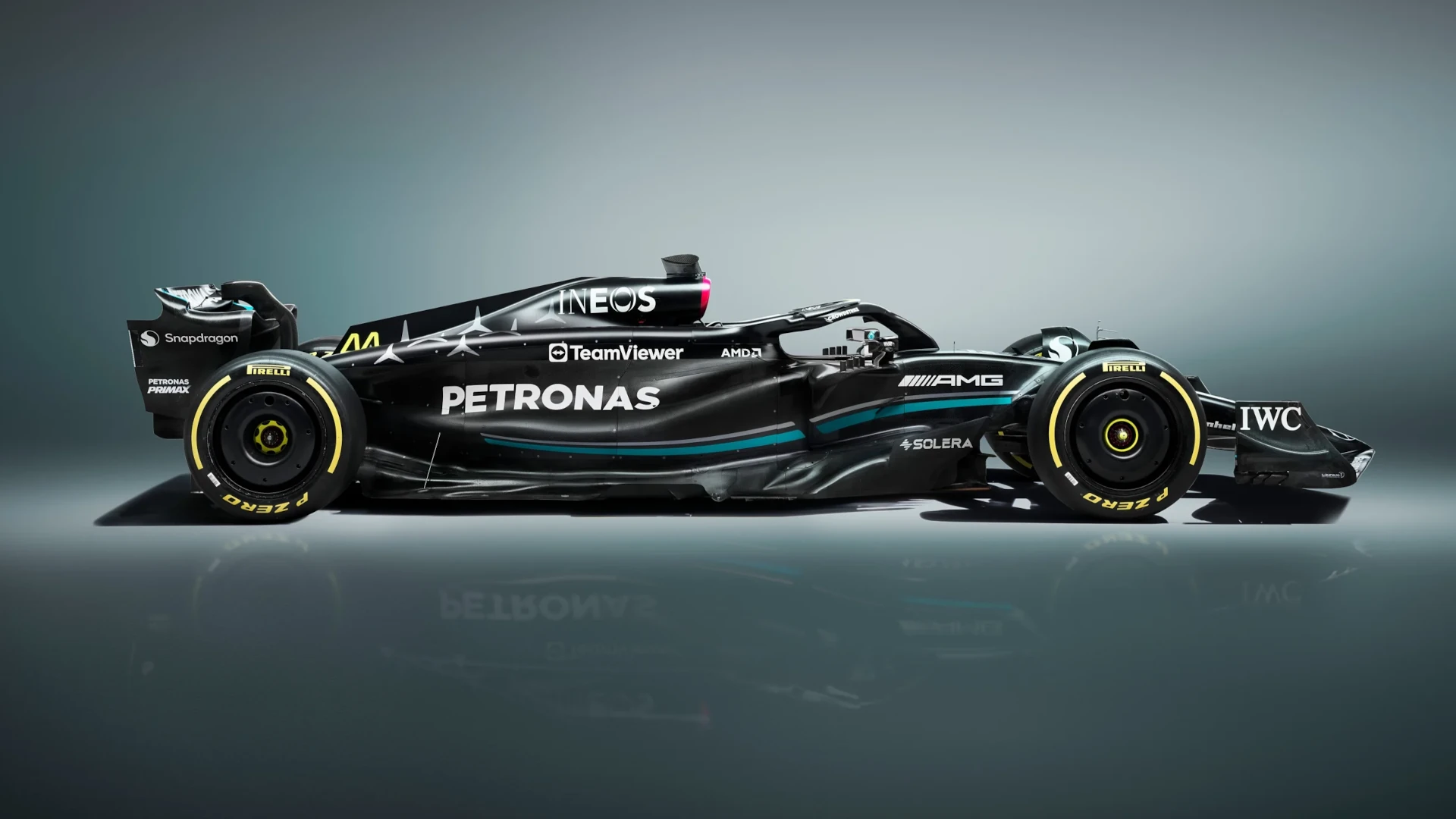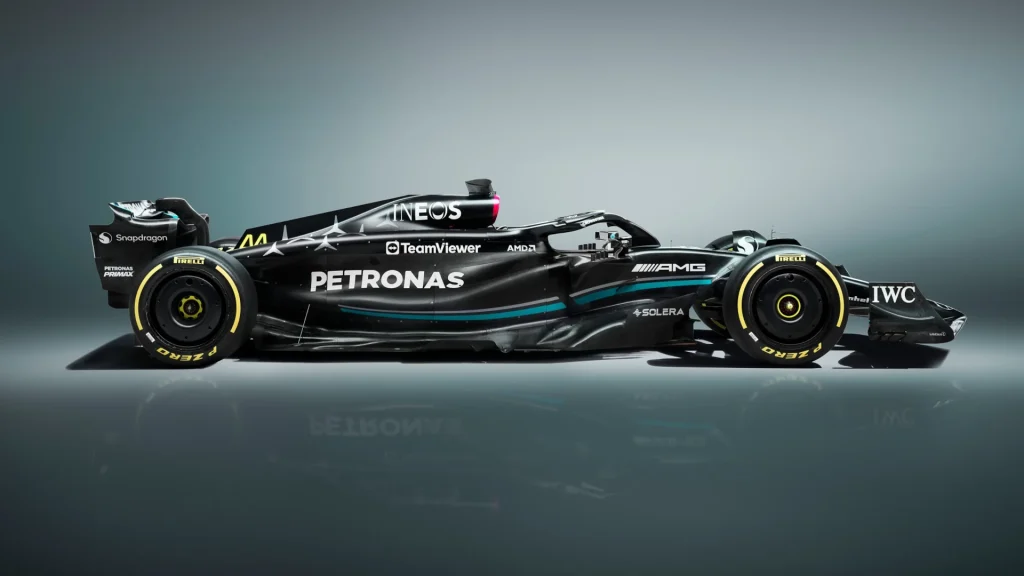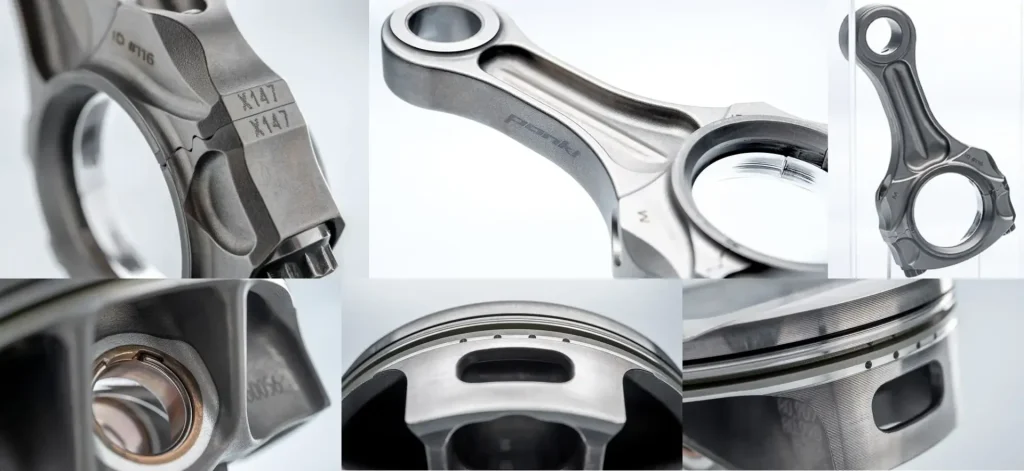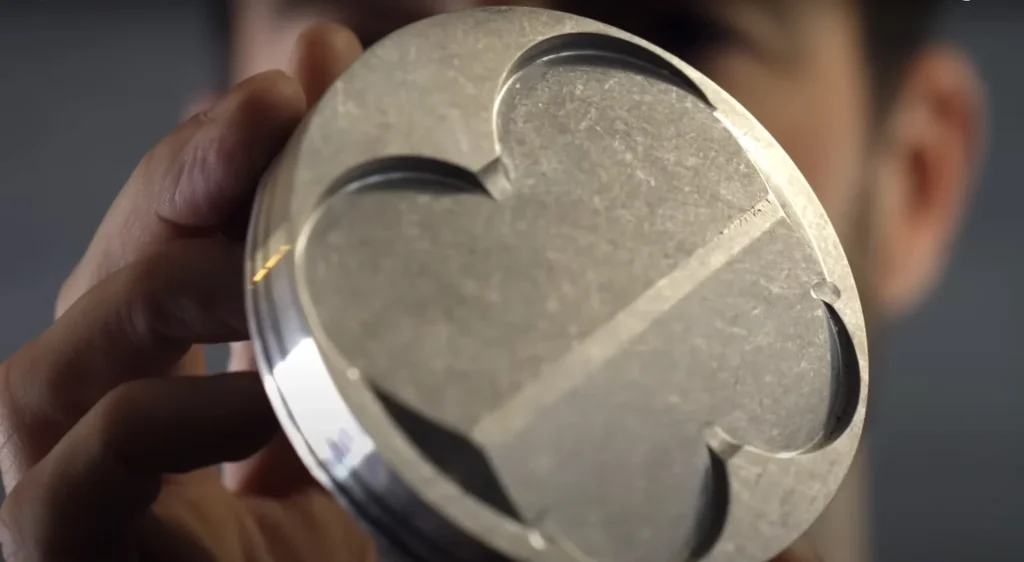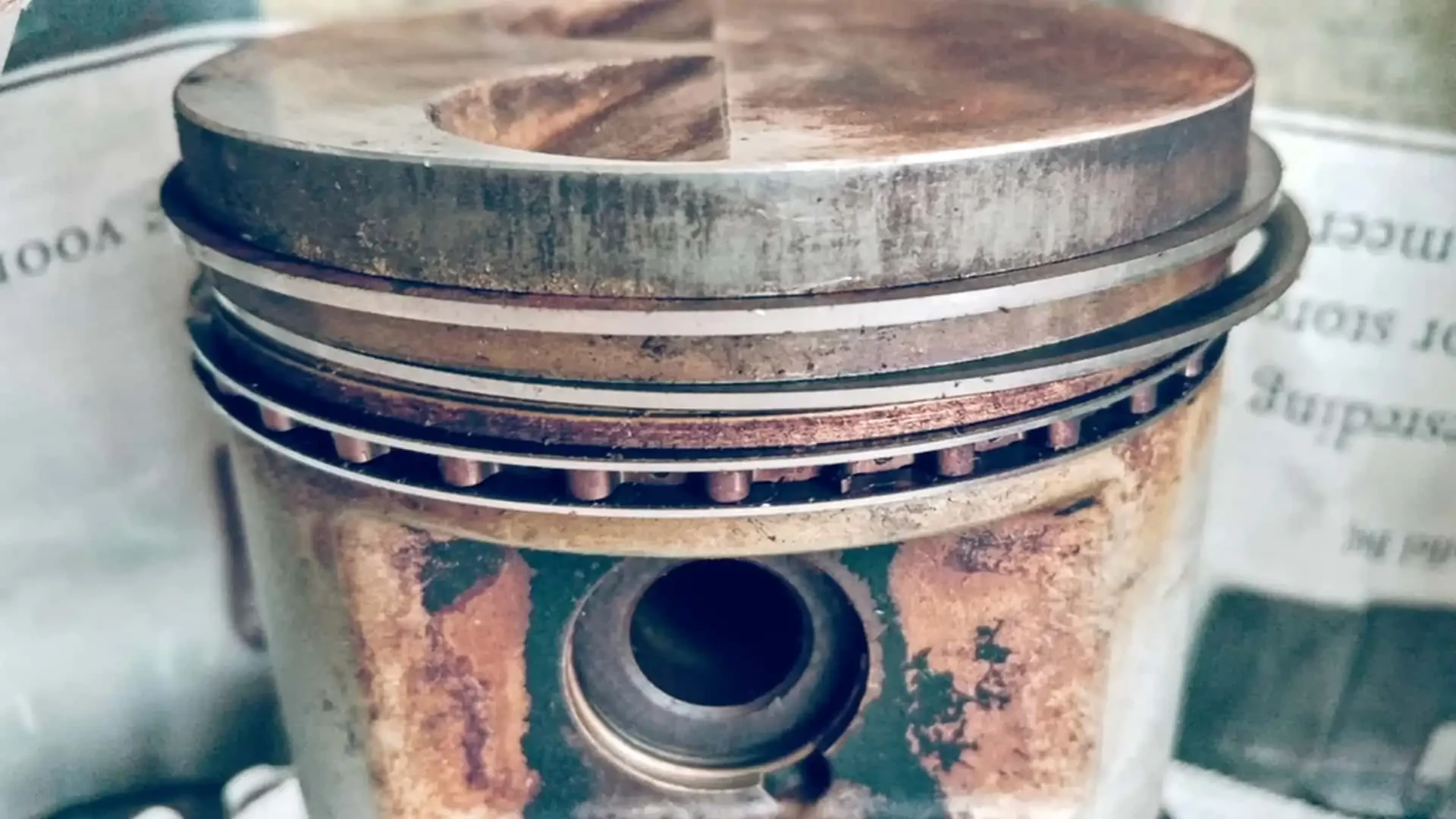Formula 1 is a spectacle that captivates millions around the world, and one of its greatest revolutions lies within the engines that power these incredible cars. Over the years, combustion technology in F1 engines has not only evolved but has redefined the rules of the game when it comes to performance and efficiency. Among the key protagonists in this fascinating story, pistons play a vital role, enduring forces that border on the unimaginable and contributing to the thermal efficiency that few conventional engines can achieve.
Today, F1 engines, such as the Mercedes AMG F1 M14, are impressive examples of this technology, with pistons weighing about only 220 grams but enduring stresses exceeding 10,000 Gs. This is quite an achievement, especially when we consider the challenge of creating an engine that operates in environments with combustion pressures exceeding 300 bar and extreme temperatures during races. The constant pursuit of innovation is what keeps Formula 1 at the forefront of automotive engineering.
The architecture of these engines is not limited to just the pistons. The combination of internal components, developed in harmony, results in the extraordinary machines we see on the tracks. Each season, new technologies are introduced, and the enhancement of engines can make all the difference in the championship competition. When we talk about combustion technology, we are truly exploring the future of mobility and engineering.
Combustion Technology: Innovations in F1 Engines
When we think about the innovations brought by Formula 1 engines, the first thing that comes to mind is thermal efficiency. It is impressive to know that these engines can achieve over 50% efficiency, something unprecedented when compared to conventional engines. This happens because, with each race, teams invest heavily in research and development, always seeking the most efficient way to convert fuel energy into motion.
These advancements go beyond what we can imagine. Teams are always looking to reduce the weight of components, which is crucial in races where every gram counts. Pistons, for example, have their design constantly refined, ensuring that they withstand not only the enormous forces they face but also the high temperatures of the combustion system. On the other hand, innovations in the materials used to manufacture them are also impressive. Lighter and more resistant materials allow the engine to operate in much more extreme conditions.
The use of simulation technology has also revolutionized how engineers develop these engines. A few years ago, this would have been practically unthinkable, but nowadays, computer simulations allow teams to test different scenarios and configurations without needing to physically assemble the engines. This strategy has enabled quick identification of which innovations are viable and which can be discarded even before being field-tested.
Pistons and Performance: The Evolution of Mechanical Design
Speaking of pistons, it is impossible to overlook how much they have evolved throughout the history of engines. When we look to the past, pistons were relatively simple elements made from materials such as wood and fibers. Over time, we transitioned to cast iron and ultimately to the modern materials we know today. The introduction of aluminum alloys, for example, ushered in a new era of strength and lightness, essential for Formula 1.
Another point worth mentioning is the pressures that a piston must withstand. In conventional engines, pressures operate around 25 bar, while F1 engines often exceed 300 bar. This is not only a design challenge but also a test for the materials that make up this component. Advances in manufacturing techniques, such as precision casting and high-tech machining, make the piston one of the most well-designed elements in automotive engineering.
The interaction of the piston with other engine components, such as piston rings, is fundamental to overall performance. The creation of rings that control the lubrication and sealing of the piston has a direct impact on engine efficiency and durability. These innovations are essential for teams to achieve the best results on the tracks. Good performance is undoubtedly the result of a well-executed piston design that respects the extreme needs of Formula 1.
Advanced Materials: Strength and Thermal Efficiency
The use of advanced materials in F1 engines is another facet that we cannot overlook. One of the focuses is to increase resistance to heat and pressure without compromising performance. The introduction of new metallic and ceramic compounds has brought significant improvements in the ability of engines to withstand extreme stresses. For example, titanium alloys and carbon-coated surfaces are a reality that helps maintain performance at extremely high temperatures.
These materials are not only more resistant but also offer advantages in terms of weight. Weight is crucial in racing, and a reduction of a few grams in the engine’s structure can translate into incredible speeds on the tracks. Thus, the industry has invested in research to create varieties that are both lightweight and extremely durable, taking full advantage of the evolving materials sciences.
The choice of materials also directly affects the thermal efficiency of the engine. Materials that dissipate heat better help maintain controlled temperatures, preventing overheating and significantly contributing to overall performance. The ability of an engine to operate at high temperatures for extended periods is one of the factors that determine its success in competition. It’s an engineering game where the details make all the difference.
Analysis of Piston Rings and Energy Efficiency
Entering the issue of piston rings, these small components play a vital role in the energy efficiency of F1 engines. The rings are responsible for sealing the combustion chamber and controlling the oil that circulates, and any failure in this function can lead to power loss and increased fuel consumption. The design of modern piston rings is a work of art and science that balances various demands of the engine.
The rings are designed to create enough pressure against the walls of the cylinder, ensuring that combustion gases do not escape. The pressure distribution in the piston rings is a key criterion. In Formula 1, where every detail counts, the geometry of these rings is optimized to enhance both sealing and resistance to friction. A more efficient design not only improves power but also helps in fuel economy, an increasingly relevant factor in competitions.
Furthermore, innovation does not stop there. The choice of materials for the piston rings is crucial. Manufacturers are now using chemically treated surfaces to maximize wear resistance and minimize friction. This makes a huge difference in the long-term performance of the engine and consistency during races. In such a competitive environment, this type of innovation can be the difference between a win and a lost race.
Author: Fabio Isidoro
Founder and editor-in-chief of Canal Carro, he dedicates himself to exploring the automotive universe with depth and passion. A car and technology enthusiast, he produces technical content and in-depth analyses of national and international vehicles, combining quality information with a critical eye for the public.

